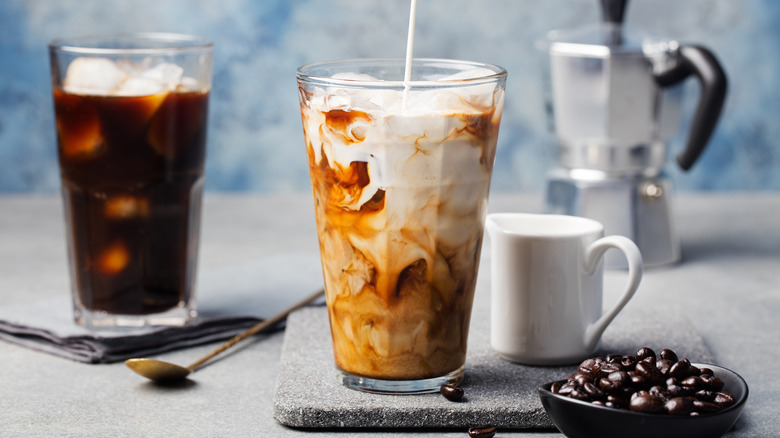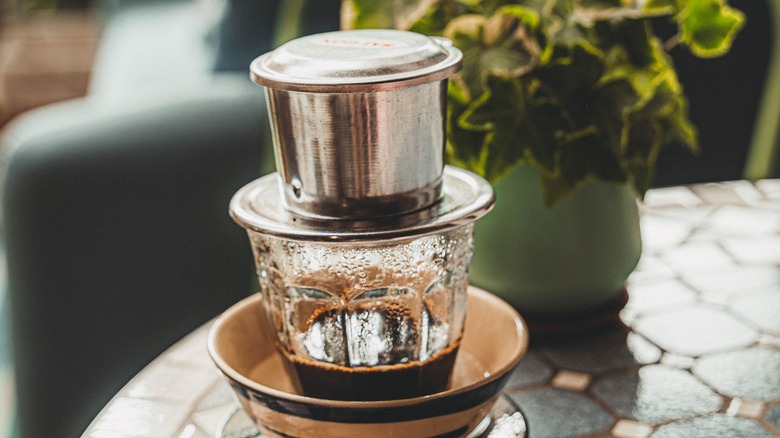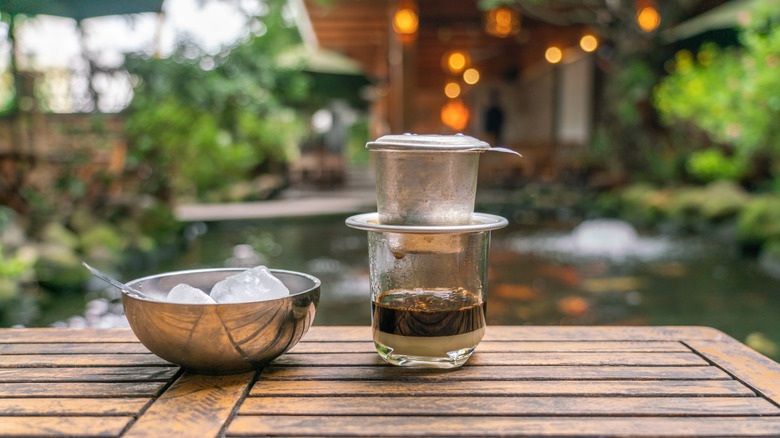Bạc Xỉu: The Lesser-Known Vietnamese Coffee
From a single Arabica tree introduced by French Catholic priests in 1857, Vietnam has expanded into the world's second-largest coffee producer, notes Visual Capitalist. Home to a multitude of varieties — including both connoisseur-esteemed Arabica beans and high-volume production Robusta, it's fair to say a cup of joe is a significant cultural component of the Asian nation. And while specialty coffee culture has already taken a strong grip, there are also many delicious home-grown styles.
With the prevalence of robusta beans in Vietnam, many of the country's coffee brews are concocted to smoothen the variety's bold flavor. As a result, many drinks mix in a flavorful addition – like cà phê cốt dừa, a coconut ice cream coffee, or cà phê sữa chua, which melds yogurt, condensed milk, and drip. However, the most renowned, especially abroad, is cà phê sữa đá, translated to simply Vietnamese iced coffee. Made with dark roasted coffee, crushed ice, and condensed milk, a few caffeinating beverages taste better on a hot day.
Lesser publicized, cà phê sữa đá also has a spin-off beverage called bạc xỉu. Made with the same ingredients in different proportions, this sweeter alternative delivers its own appeal. Let's dive into how it comes together.
How to make bạc xỉu
Like most Vietnamese coffees, bạc xỉu starts with a cup of joe prepared with the iconic Phin brewer. Unlike V60 and Aeropress contraptions, the Phin does not need a coffee filter — making it an especially eco-conscious option. Ratios for coffee to water differ but typically average around four ounces of water per two tablespoons of coffee. The water is heated to just below boiling temperature; then, a small amount is poured over dark-roasted and finely ground coffee for blooming. Next, the brewing starts, aiming for five minutes of dripping. The resultant coffee can be brewed directly over ice or kept hot and mixed with ice in a shaker.
Next comes assembling the bạc xỉu, also referred to as Saigon-style coffee. A shaker is filled with half a cup of ice, three tablespoons of condensed milk, and four ounces of cold milk. It's vigorously shaken and then poured into a tall glass. The cold Phin coffee is then poured into the glass, creating an eye-catching swirling texture. If hot coffee was prepared, cool it in a rinsed shaker with half a cup of ice.
Bạc xỉu is much lighter in color and creamier in texture than traditional Vietnamese coffee
The most immediate differentiation between the two styles is visual — bạc xỉu has a much lighter color than cà phê sữa đá due to the amount of milk. Such an appearance explains its occasional name, white coffee. As a result, expect a creamy, frothy texture and hardly any bitter flavor, not dissimilar to an iced latte. The beverage's high-fat content also gives it a pleasantly oily mouth-feel, while Vietnamese iced coffee has a more robust coffee taste since it goes lighter on the amount of milk.
While cà phê sữa đá is a style concocted to enjoy coffee, bạc xỉu likely originated as a way to enjoy milk. In the early days of French colonialism, fresh dairy was scarce. Since condensed milk and hot water result in an unpalatable taste, just a bit of coffee was added for flavor. As a result, bạc xỉu is enjoyed as a refreshment, including by children, rather than as a caffeinating jolt. Such an easy-going nature makes the drink perfect for an afternoon cool-down — with less fear of jitters involved.


